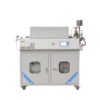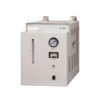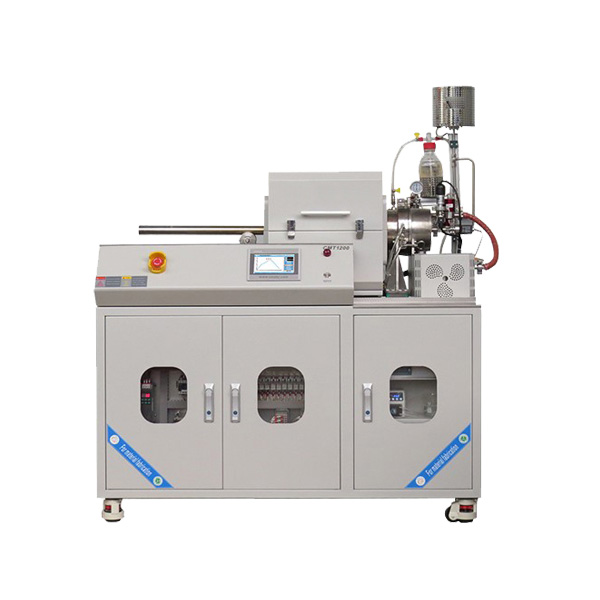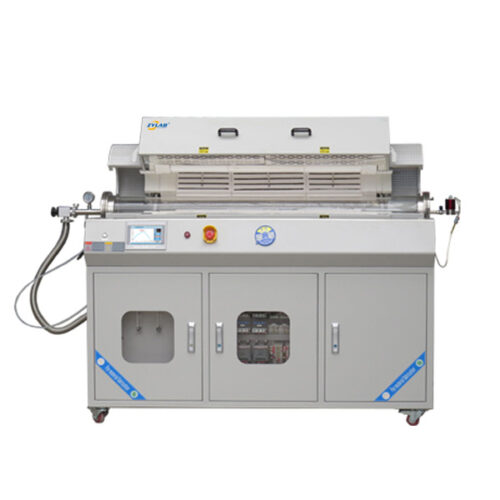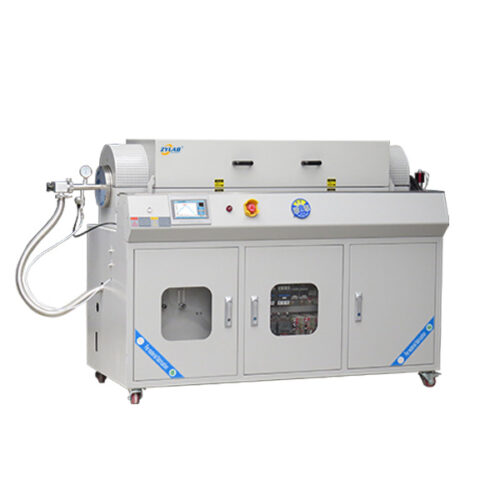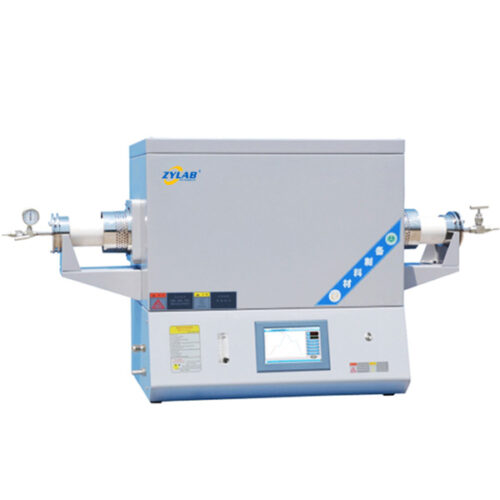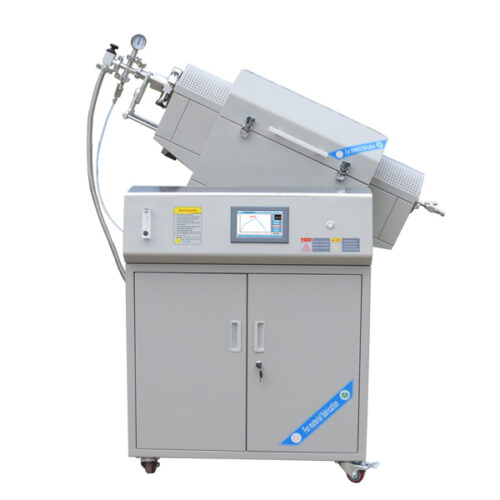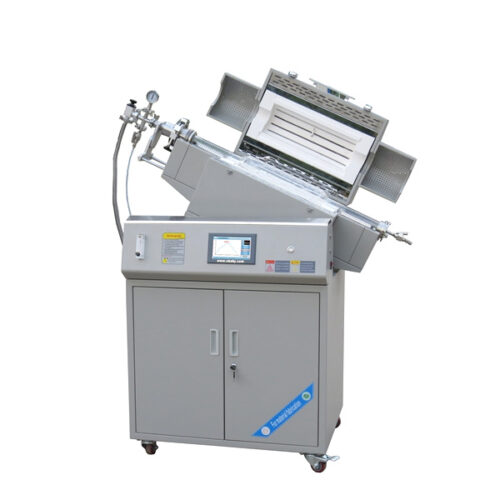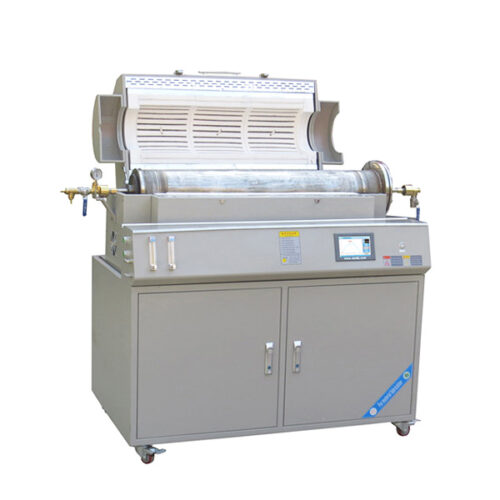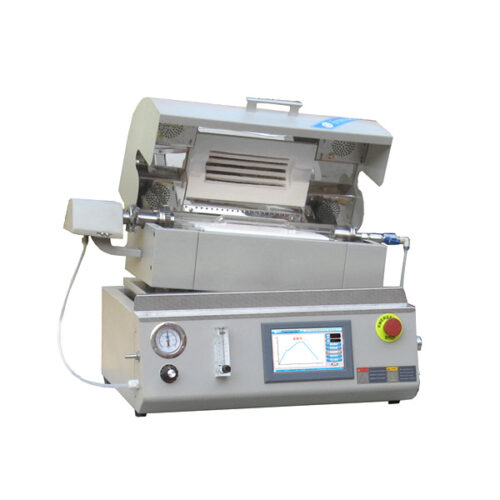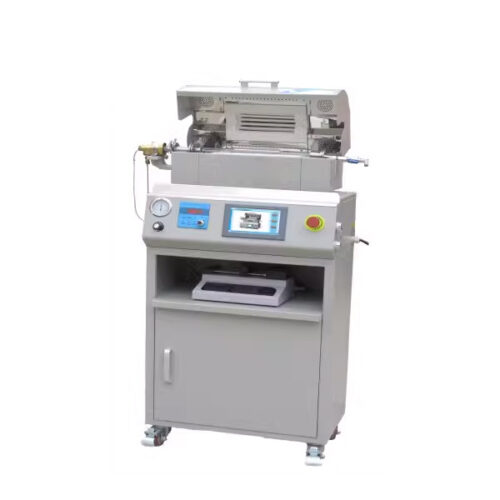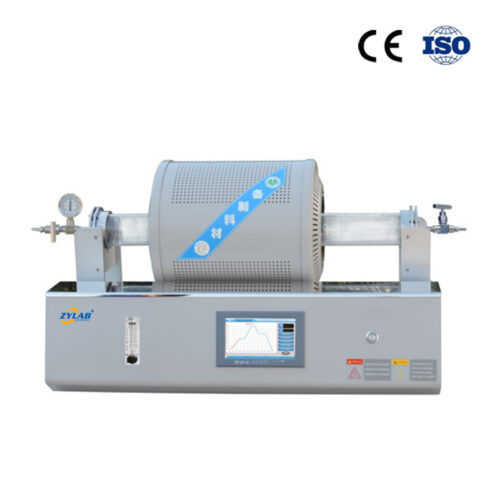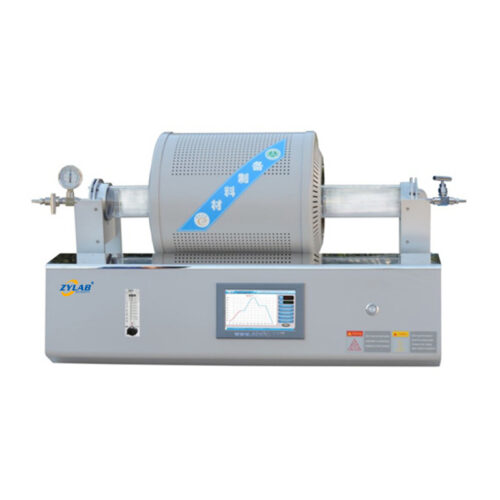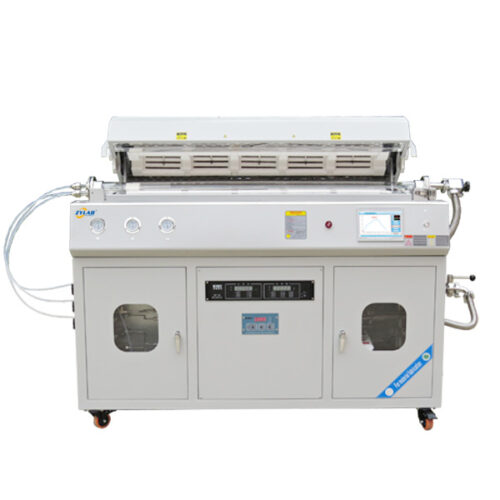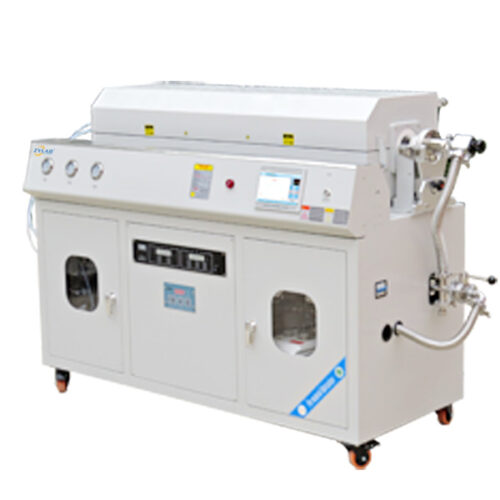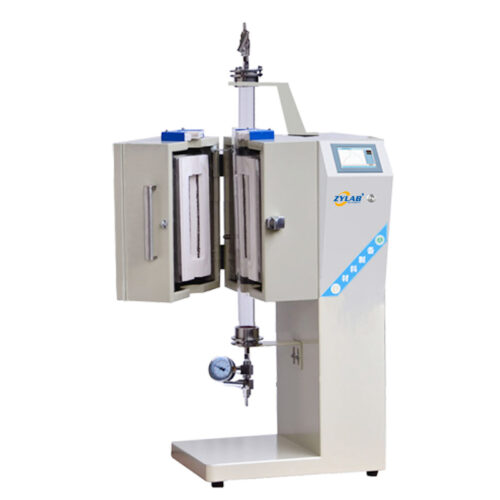Intelligent Sliding Hydrogen Atmosphere Furnace
Overview:
The Intelligent Sliding Hydrogen Atmosphere Furnace is a specialized device designed for use in higher education institutions, research institutes, and industrial enterprises. It is primarily used for sintering, melting, and analyzing metals, non-metals, and other compound materials under controlled atmosphere and vacuum conditions.
This equipment mainly consists of a sliding furnace chamber, a stainless steel quick-release reaction chamber, a liquid-gas phase supply system, a high-vacuum molecular pump unit, and a gas safety protection system. The control system uses an advanced PLC combined with a touch screen operation system, featuring multiple safety protection designs to ensure the safety of both the operator and the equipment. The system is highly integrated, allowing for convenient and intuitive experimental operation through the touchscreen human-machine interface.
The system comes pre-configured with five automatic sintering modes: dry hydrogen sintering, wet hydrogen sintering, low vacuum sintering, high vacuum sintering, and protective atmosphere sintering. These modes can be selected according to process requirements. The entire experiment process is fully automated. After sintering, the furnace chamber automatically moves away (to achieve rapid cooling of the material), and the gas supply is automatically shut off at the set temperature, completing the entire experimental process.
Features and Benefits:
- Pre-set with five automatic sintering modes, with the option to customize sintering modes as needed.
- The system is stable and reliable, easy to operate, and has comprehensive safety protection measures.
- Uses advanced PID self-learning fuzzy control, with high temperature control accuracy, maintained within ±1°C (±2°C in the tube, during the constant temperature phase).
- Fully automated experimental process, with automatic furnace chamber removal after sintering (for rapid material cooling).
- Equipped with IoT functionality, allowing remote monitoring and operation of the equipment via smartphone or computer.
- Data storage function, capable of storing important sintering parameters for up to 30 days (assuming 8 hours of daily operation).
- Recipe function, capable of storing over 100 recipes.
- Multiple fail-safe features for enhanced user safety.
- Network connectivity through an RJ45 interface using the TCP/IP protocol, enabling connection with a host computer (host computer must have the appropriate software installed).
Technical Parameters of Hydrogen Atmosphere Furnace:
| Model | CMT1200 | |
| Tmax | 1150℃ | |
| Power Supply | 380V 50HZ | |
| Rated Power | 10KW | |
| Ignition Power | 0.6KW | |
| Ignition Method | Silicon carbide rod ignition | |
| Heating Element | High-quality iron-chromium-aluminum alloy wire | |
| Thermocouple | K-type, 420mm | |
| Heating Zone Size | φ250*300mm | |
| Recommended Heating Rate | 3~5℃/min | |
| Nitrogen Flow Rate | 8L/min | |
| Hydrogen Flow Rate | 8L/min | |
| Peristaltic Pump Flow Rate | ~12ML/min | |
| Furnace Tube Material | 310s | |
| Furnace Tube Volume | 10.5L | |
| Crucible Material | 310s | |
| Crucible Size | φ100mm*100mm | |
| Flow Meter | 0.5~8L/min float flow meter (2 units) | |
| Protection Functions | Anti-backfire, anti-backflow, overpressure protection | |
| Number and Specifications of Gas Inlets | φ6.35 double ferrule fittings (2 units) | |
| Vacuum System | Vacuum pump 4L/s + molecular pump F-100/150 | |
| Furnace Dimensions | Length 1550×Depth 770×Height 1250mm | |
| Control System |
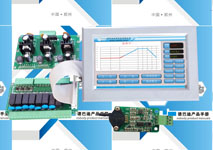 |
1. Sintering process curve setting: Dynamic display of the set curve, capable of storing multiple sintering process curves, each of which can be freely configured.
2. Scheduled sintering: Enables unattended sintering process according to a preset sintering curve. 3. Real-time display of sintering power, voltage, and other information, with data recording and export functions for paperless documentation. 4. Remote control capability for real-time monitoring of equipment status. 5. Temperature correction: Nonlinear correction of the difference between the main control temperature and sample temperature throughout the sintering process. |
| Temperature Accuracy | ±1°C (±2°C in the tube, during the constant temperature phase) | |
| Stainless Steel Quick-Release Reaction Chamber | 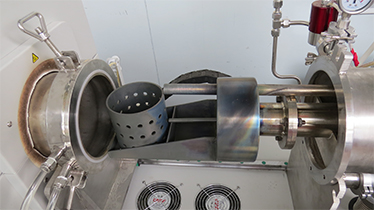 |
|
| Weight | Approximately 370KG | |
| Service Support | 1-year warranty, with lifetime support (warranty excludes consumable parts such as furnace tubes and O-rings) | |
Applications:
The Sliding Hydrogen Atmosphere Furnace is a versatile tool with applications across various industries, particularly in materials science and metallurgy. Here are some key applications:
-
Metal Powder Production
- High-Purity Metal Powders: Used in the production of metal powders such as tungsten, molybdenum, and other refractory metals. The hydrogen atmosphere prevents oxidation, ensuring high purity.
-
Sintering of Metal and Ceramic Components
- Metal Sintering: Facilitates the sintering of metal parts, particularly those that require a hydrogen atmosphere to prevent oxidation, such as stainless steel, titanium, and nickel-based alloys.
- Ceramic Sintering: Suitable for sintering ceramic components that benefit from a reducing atmosphere, which can alter the material properties and enhance performance.
-
Reduction of Metal Oxides
- Oxide Reduction: Used for the reduction of metal oxides to pure metals, a critical step in the production of materials like cobalt, nickel, and iron, where the hydrogen atmosphere acts as a reducing agent.
-
Heat Treatment of Alloys
- Annealing and Stress Relieving: Provides heat treatment for alloys under a hydrogen atmosphere, which can help improve mechanical properties by reducing internal stresses and eliminating surface oxides.
-
Hydrogen Embrittlement Studies
- Material Testing: Enables research on hydrogen embrittlement, a phenomenon that affects the mechanical properties of metals. This furnace allows controlled exposure to hydrogen for studying its effects on different materials.
-
Catalyst Production
- Catalyst Sintering: Used in the production of metal catalysts, where precise control over the sintering environment is required to achieve desired catalytic properties.
-
Advanced Material Research
- R&D Applications: Ideal for research and development in advanced materials, including the study of hydrogen storage materials, the development of new alloys, and the investigation of materials for use in extreme environments.
-
Vacuum and Protective Atmosphere Processing
- Vacuum Sintering: The furnace’s ability to operate under vacuum makes it suitable for processes that require minimal contamination, such as the preparation of sensitive electronic materials.
- Protective Atmosphere Processing: In addition to hydrogen, the furnace can operate under other protective atmospheres (like nitrogen or argon) for processing materials that require a non-oxidizing environment.
-
Melting and Purification of Metals
- Metal Melting: The furnace can be used to melt metals in a hydrogen atmosphere, which helps in the purification process by reducing oxides and impurities, resulting in high-purity metal ingots.
-
Component Manufacturing for Aerospace and Automotive Industries
- Specialized Parts: The controlled atmosphere and precise temperature control make it ideal for manufacturing critical components used in aerospace and automotive industries, where material integrity is paramount.
The Sliding Hydrogen Atmosphere Furnace’s ability to operate in both vacuum and hydrogen environments, coupled with its advanced control systems, makes it a powerful tool for a wide range of industrial and research applications.

